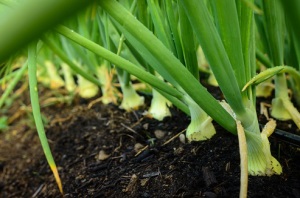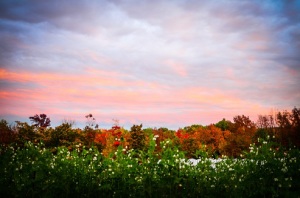- red russian or dino kale (1 bunch)
- red or yellow tomatoes (2-3 fruits)
- green tomatoes (3-4 fruits)
- cayenne peppers (2 fruits)
- bell peppers (3 fruits)
- brussel sprouts or snap peas (3/4 pound)
- broccoli (1-3 crowns)
- napa cabbage (1-2 heads)
- green onions, red or yellow (1 bunch)
- carrots (1 bunch)
- daikon radish or turnips (1 bunch)
- delicata or butternut squash (1 fruit)
- garlic (2 heads)
- optional: dozen eggs and/or sprouts
- Last COMMUNITY WORKDAY/SKILLSHARE of the season. THIS Saturday, October 25 – garlic planting, prepping high tunnel for spring planting, maybe assembling part of the timber frame.
- Extra produce available for sale for general sales. We can deliver if you are in our delivery route:
onions $1.75/pound
red onions $2/pound
kale $3/bunch
cabbage (coming up in a few weeks) $3/pound
potatoes $1.50/pound
- The official final distribution day is October 29. That means 2 more weeks. We want to extend the abundance of the season to you, so are offering an extra week of shares, November 5. The cost is your standard weekly charge. If you have contributed 5 hours of time to the farm this season then this extra week is on the house.
- Soul Fire handcrafted calendula-comfrey salve made with olive oil, beeswax and our own naturally grown herbs. Ample 4 ounce jars for only $9 (50% of retail). Show some love to your skin as autumn air advances. Free delivery with your CSA share on October 22 and 29. Order ahead. Limited availability. Sign up form here.
- We are retiring our current 18 months old laying hens, and offering them at $5 per bird.
- Please read about our plans for Sabbatical next year in Newsletter #13, as we take the time to do some powerful reflection and development our organization, infrastructure and international networks of solidarity with farmers.
- Please RETURN YOUR BOXES. You can leave them where you get your delivery. If you break them down, please make sure not to tear or bend any of the tabs, or just leave the assembled box for us and we are happy to break it down.
- WASHING YOUR VEGGIES. We do not extensively wash veggies before delivering them to you. We will do some washing if there is a lot of dirt on greens and we always rinse root crops. In general, this allows the food to stay fresher longer. It also means you need to wash your veggies before consuming them. For greens: fill a bowl with cold water. Soak greens in water for a minute. Drain water and repeat two more times. Dirt will rinse to the bottom. Bugs should float to the top.
- All of our newsletters are archived on our website, along with lots more, including educational resources and more recipes. Thanks!
Food Justice
I thought it appropriate as we round out the season, to share additional definitions of food sovereignty. This is from By the Root, an occasional post from Harvesting Justice: Transforming Food, Land, and Agricultural Systems in the Americas
Food Sovereignty
Food sovereignty is a term used around the world to call for food systems that are just, sustainable, and democratically governed by people and communities (not corporations). Food sovereignty is not a one-size-fits all approach, or a singularly defined demand. It is an expansive, and evolving vision that looks different in different communities. Six widely accepted principles of food sovereignty include: the right of everyone to healthy food; the valuing of all those involved in growing, harvesting, and processing food; putting providers and consumers at the center of decision making and rejecting policies that give power to remote and unaccountable corporations; local control over, and access to, land, water, and seeds; the honoring of local knowledge and skills; and working with nature and healing the planet.
The late Charity Hicks, from the Detroit Food Justice Task Force said, “Food sovereignty is talking about our quality of life. [It’s] the whole context of how we move from survival to ‘thrival’ culture. Food sovereignty is about ‘thrival’ culture.”
Recipe Story – Pickled Green Tomatoes

Ingredients: green tomatoes, chlorine-free water, 2 T. coarse salt, 2-3 cloves of garlic, 2 tsp. black peppercorns, 2 tsp. yellow mustard seeds, a large sprig of fresh dill, 2 bay leaves, 1 fresh or 2 dried cayenne peppers and if you can get it, a sprig of fennel. (It was the Soul Fire fennel and peppers that inspired me to dredge up the old recipe from the depths of my memory.) Some recipes say coriander seeds, they are probably right but I didn’t have any.
The most important thing is the brine. It does help to make it with coarse salt, either kosher or sea, but I didn’t have a chance to get any so I used table salt (papa and uncle being too long gone to turn over in their graves) and the pickles came out pretty good anyway, though a bit too salty because the proportions are different with a finer salt.
Let’s say we start conservatively, making only a quart of green tomato pickles, til we see how they come out. The tomatoes have to be REALLY GREEN, no blush at all, or they will turn to mush. Use a wide mouth quart jar, fill it about half full of chlorine-free water (any filtered drinking water or spring water) and put in 2 tablespoons of coarse salt or one tablespoon of non-iodine table salt, and shake it up with the lid on til the salt dissolves completely. Cut the tomatoes in quarters and stuff them into the jar quite tightly, leaving just a little bit of room on top. The brine should cover the tomatoes, it’s ok if some runs out. On top, stuff in the rest of the ingredients — garlic (whole cloves), peppercorns, mustard seed, bay leaves, dill, and optional fennel. If you have a fresh cayenne pepper, it will add to the fun, but a dried pepper or a few red pepper flakes are fine too. Stuff everything on top and down the sides, using just your fingers so as not to smash the tomatoes, put the lid on and shake it upside down a few times. Then TAKE THE LID OFF, pickles have to have air to ferment. The tomatoes should be stuffed in tightly enough so they can’t float up above the brine. Cover with a piece of cheesecloth or other light cloth secured with a string or rubber band, set it on the counter or a cool dry place and forget about it for four or five days, except if you think of it once or twice, take the cloth off, put the lid on, and turn the jar upside down very gently a couple of times. Don’t forget to take the lid off and put the cloth back on when you put it back to ferment some more. After 4-5 days you will have pretty good half-sours. After that you can put them in the refrigerator to slow the process down, or keep them out and just taste them day by day til they get good and sour or they are all eaten up. Papa and uncle did not refrigerate the pickles, but the unheated back room on the farm in the Catskills was pretty cold by September green tomato time.
The Catskills when I was a kid used to have a frost by the first day of school every year, which was always the day after Labor Day — no more. The growing season was not long enough, ever, to ripen tomatoes and Papa and Uncle insisted on growing them anyway, so the day before Labor Day dozens of green tomatoes were laid out on a long table, to be pickled (whole, not quartered like we just did) in big crocks, held down with slabs of board. Nobody touched them for a couple of weeks. Then we ate them right out of the crock, or brought jars of them up to the kitchen to eat with meals, for a couple of months.
If anyone tries this recipe, let me know how it comes out: naomi@nycap.rr.com
Es gezunter — eat in good health!
P.S. Papa lived to 94, Mama to 96, Uncle to 99, and Bubbie to 100, in case you were worried about them eating so much salt.
Farm News
Several months ago I said summer was in full swing. I’m not sure I have ever heard anyone say fall is in full swing, but she is here. This is not the exquisite foliage of early fall. This year, being one of the most incredible and lengthy color shows I can remember. It’s not the crisp chill to nights with warm days of shedding layers. Nope. We are cold and wet. Capers and Lissa continue to endure cold fingers and mud soaked boots and pants. No rain gear is good enough for a week of driving cold rain while kneeling in the mud. I am warming my fingers in the woodshop, cutting the final pieces for the barn timber frame. This week has also brought our first hard frost, bringing an end to the tomato crop, sugar snap peas, peppers and tomatillos. Are you thinking, “Geez, I’m glad I’m not out there right now”? Well, we cannot have the abundance of what happens here without the pushing the margins of our comfort zones. Without darkness, we would not be able to see the stars. Without sadness, how would we know the true bliss of happiness?
Now the bright. With the fall and frost, comes an unprecedented sweetness to the brassicas in the field: kale, brussel sprouts, and collard greens. The weeds’ growth has slowed to a crawl, and we get to relish in the order at the end of the season of the fields being put to sleep under a blanket of mulch. A tranquility that many parents know as they kiss their rambunctious child goodnight, with an inexplicable sense of love and gratitude washing over, despite all the challenges, fights and messiness of the day.
Now that I’ve painted that calm idyllic picture of the farm this fall, let me tell you what is really happening. Because there is so much! We continue to coordinate with a fabulous impromptu collective of local filmakers to produce our Soul Fire video. Being able to work with such brilliant and driven people is an incredible blessing, and coordinating everyone’s schedules is a near full time job!
We continue to meet with loved family and community who are offering insight, strategies and wisdom about moving forward with our impending fundraising campaign. These meetings have looked like: talking with Leah’s cousin Natalie with her three young children playing in the background, and Neshima praticing harp on our end.
This looks like our dear friend and supporter Corey Aldrich coming over for a meeting a half hour early after work one evening and still staying for no less than 6 hours, every minute packed with calamitous laughter, brilliant insight, and deeply personal and connected conversation.
This looks like taking a moment to recline in the home studio of Truemaster, for a much needed, deeply meditative musical therapy session, all the while brainstorming the score for the Soul Fire video. This looks like phone conversations with Leah’s urban designer professional brother as he works on creating renderings of our infrastructure development.

This looks like, sharing details and photos with our dear friend and incredible NYC based artist-muralist-activist-
This looks like learning to use Instagram and Twitter with the fading hours of the day. (I know, we are late to this. But really, show me a farmer who has time?)
All the while, we dance, we laugh, we take moments to pause and look each other in the eye.
THIS is what is behind the food you are eating from us. What cannot be conveyed in beautiful landscape photos of the farm, or even smiling faces. How did we get to be so blessed that this community of support is not only working together to move the Soul Fire vision for liberation forward, but pour their hearts into it? I guess the “this” is:
Community.
Is family.
Is fierce dedication.
Is love.

